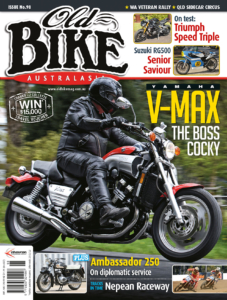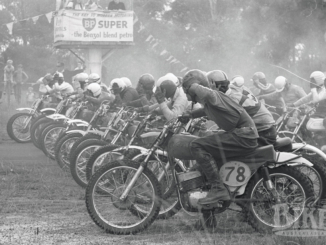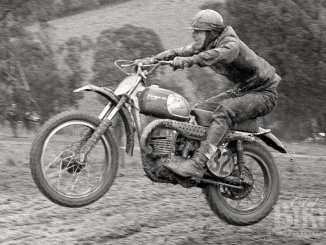
From our Old Bike Archives – Issue 98 – first published in 2021.
Story and photos: Stuart Francis
It is a common misconception that Douglas were the only company to use the fore and aft flat twin engine layout. Douglas were by far the biggest user of this engine layout, building them from 1907 until the outbreak of WW2, but they were not alone.
William and Edwin Douglas got into the motorcycle business by accident, when a company they supplied castings too, Light Motors, went into receivership. Light Motors were probably the pioneers of fore and aft flat twins. The Douglas brothers spotted an opportunity in carrying on production of these smooth, nimble, sturdy, low vibration machines, which performed well, and seemed to sell. Their appeal was enhanced with success on the Isle of Man, European race tracks, dirt tracks, and as Dispatch Rider mounts in WW1.
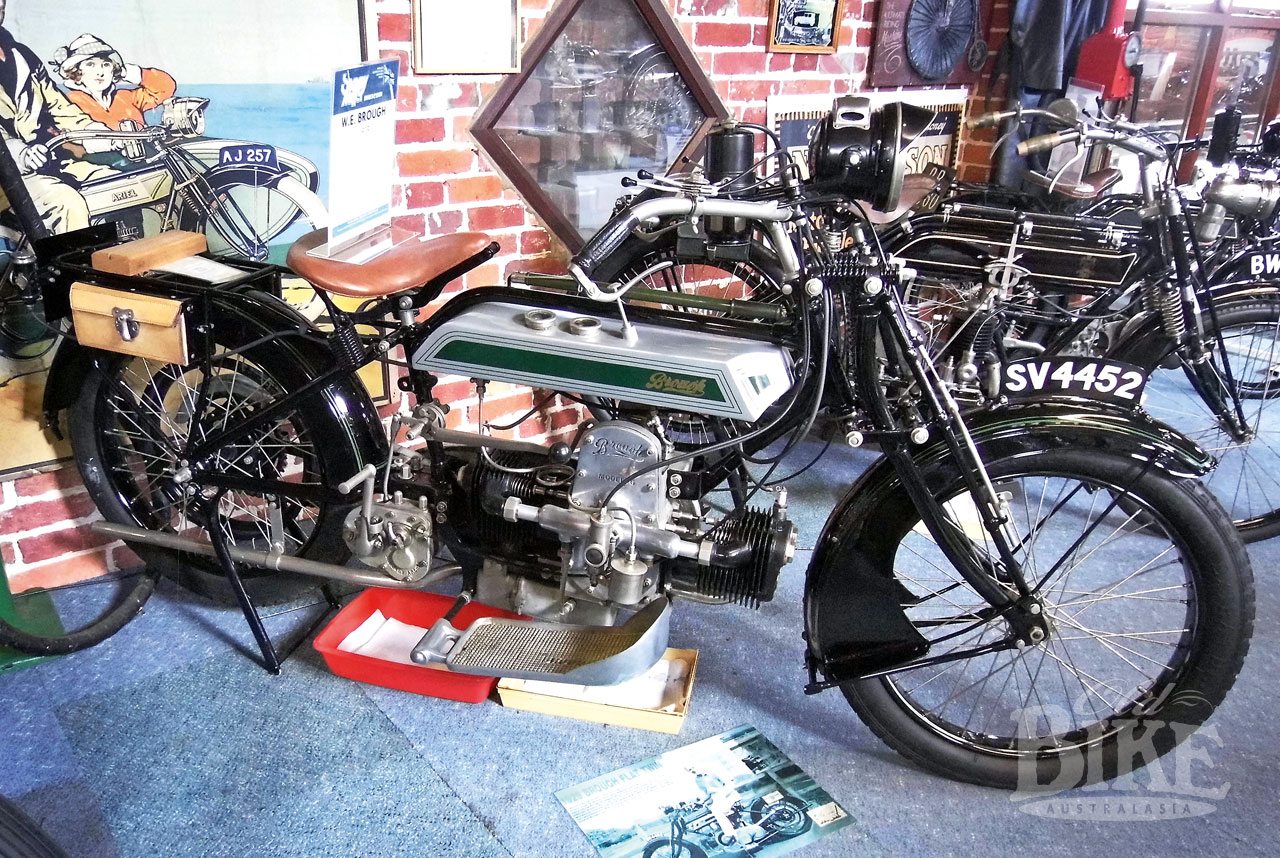
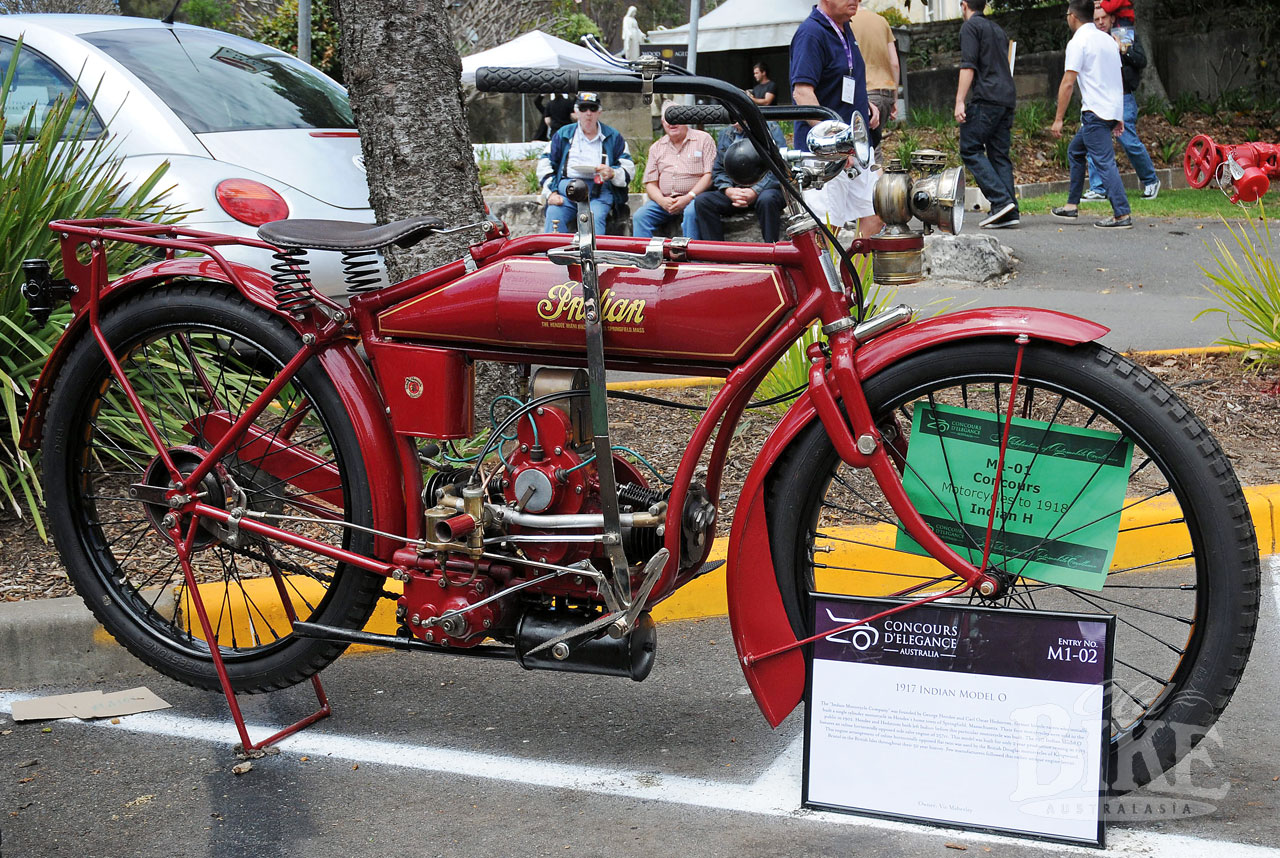
So it is not surprising that a number of other makes tried fore and aft flat twin configuration: Brough (not Superior), D-Rad, Victoria, Wilkinson, Indian (model O) and Harley Davidson (model W & XA) to name a few. Perhaps the most esoteric of them all was the Quirks Mona, the first truly indigenous Australian machine.
Within this article we’ll examine one of the more obscure fore and aft flat twins to be produced, the 1916 ABC, its better known sibling the Sopwith ABC, and the unique Australian machine the Quirks Mona.
1916 ABC
The 1916 ABC was designed and produced by Granville Bradshaw, a talented engineer and a keen motorcyclist. Granville came into contact with the motorcycle racing community when working on aircraft at Brooklands before WW1. He became friends with an Australian flyer, and Douglas works rider, Les Bailey. In November 1912 Granville extensively modified one of Les’ machines, adding steel cylinders, overhead valves and a three throw crankshaft. The outer throws of the crankshaft drove one piston whilst the middle throw moved the other piston (designed to reduce vibration and keep the cylinders on a common axis). The modified machine set the 350cc flying kilometre record at 72.63mph at Brooklands.
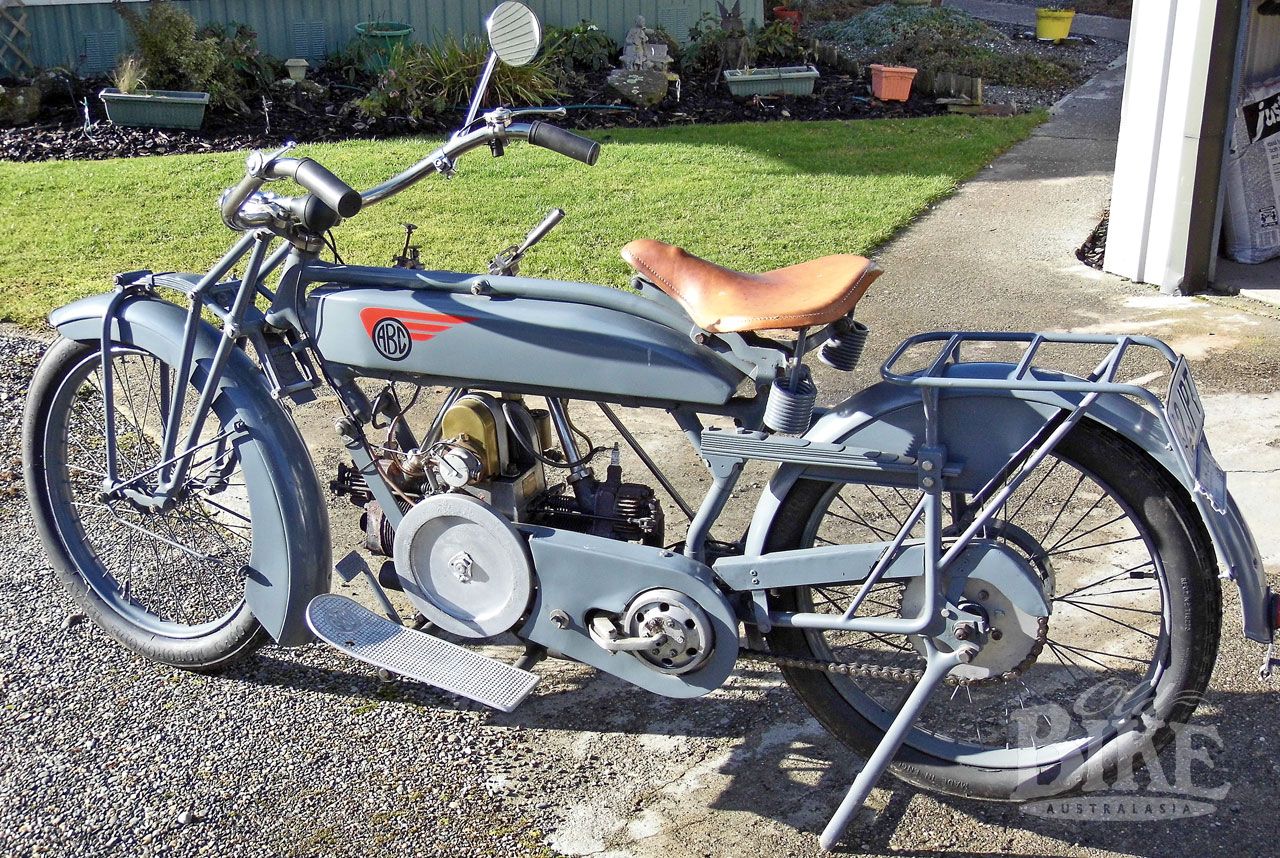
In 1913, based on his experience with Les Bailey’s record-breaking Douglas, Granville designed the ABC motorcycle. He produced three versions of the machine; a standard model and two racing models, the TT model and a Brooklands model. The standard machine had a 2 throw crank and exhaust over inlet valves gear, while the racers had 3 throw cranks and overhead valves. Excellent results in a number of 1914 race meetings, and the first 500cc motorcycle to exceed 80mph at Brooklands, had orders flowing in but production was overtaken by the growing demands for munitions and specialist equipment, for British forces in WW1.
A large batch of standard machines with sidecar was produced for the British Army in Egypt but finished up at the bottom of the Mediterranean after their ship was torpedoed. The engine continued to be used throughout WW1, powering small generators, trench pumps and an observation balloon inflator, all designed by the fertile mind of Bradshaw. The engine was also used by Brough and Zenith motorcycles. The motorcycle is very different to the later Sopwith-produced ABC, an across the frame flat twin that Bradshaw also designed.
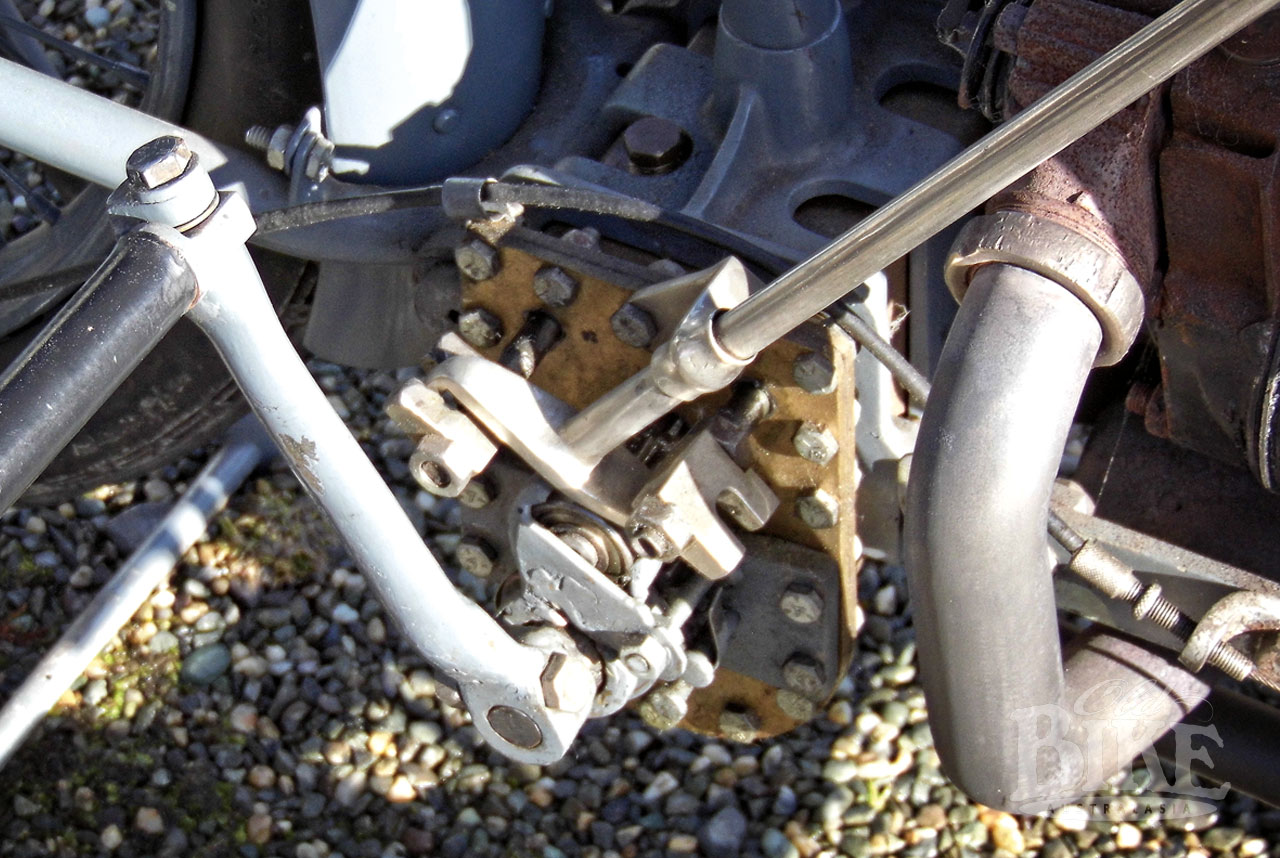
The 1916 ABC Standard model featured is radically different to most machines of the time with a number of very advanced features. The 495cc engine had exhaust over inlet valves (a rather unusual arrangement for a motorcycle) and a large external flywheel. Swinging arm rear suspension was used and initially a 3 speed Armstrong gearbox, cone clutch and all chain drive. The chain driven gearbox was situated behind the engine and close to the swinging arm pivot to reduce rear chain tension variation. Because the engine bolts sat in slots, the engine could be moved in the frame to adjust primary chain tension. The only brake was a contracting band brake on the rear wheel. A 4 speed bronze shell gearbox was introduced in 1915, when most machines had one, or two gears if they were lucky. The bronze shell is quite large even by today’s standards.
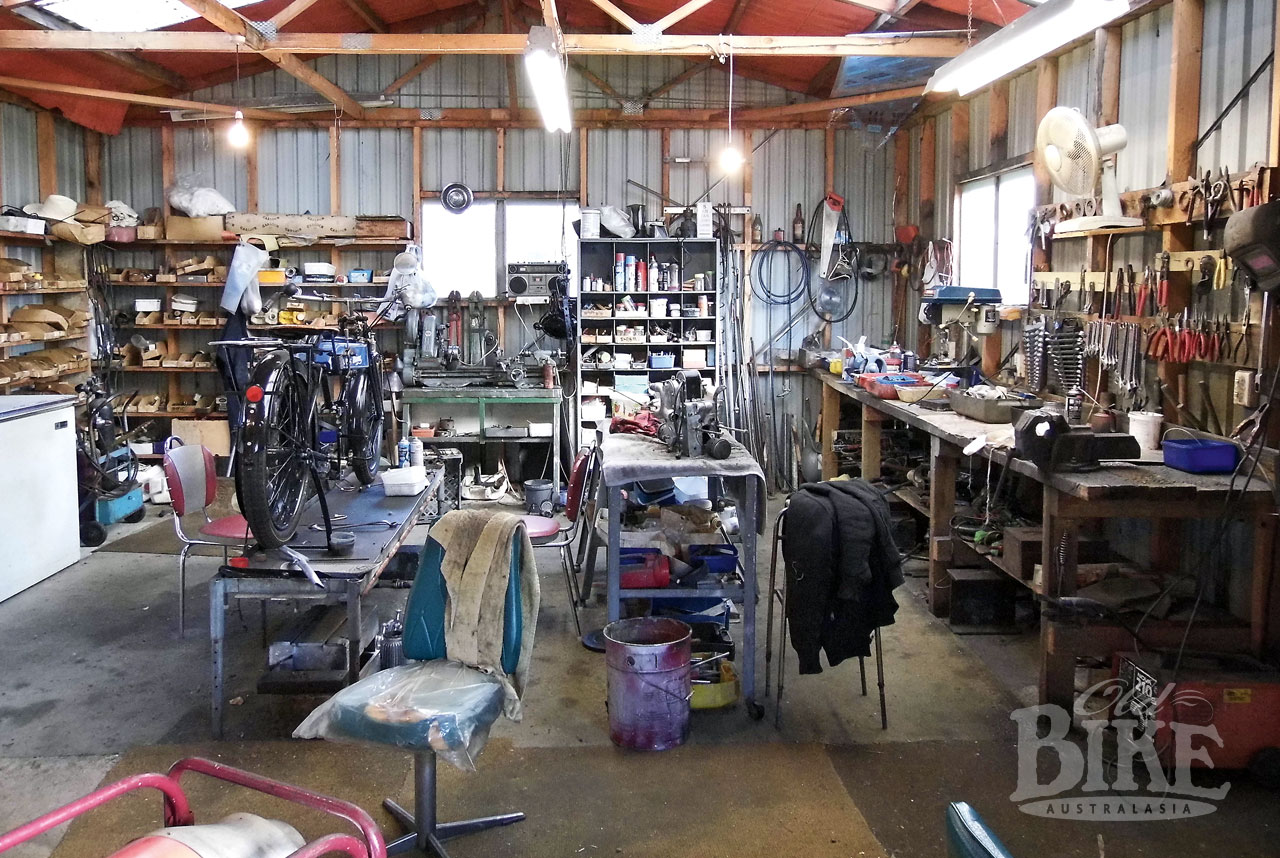
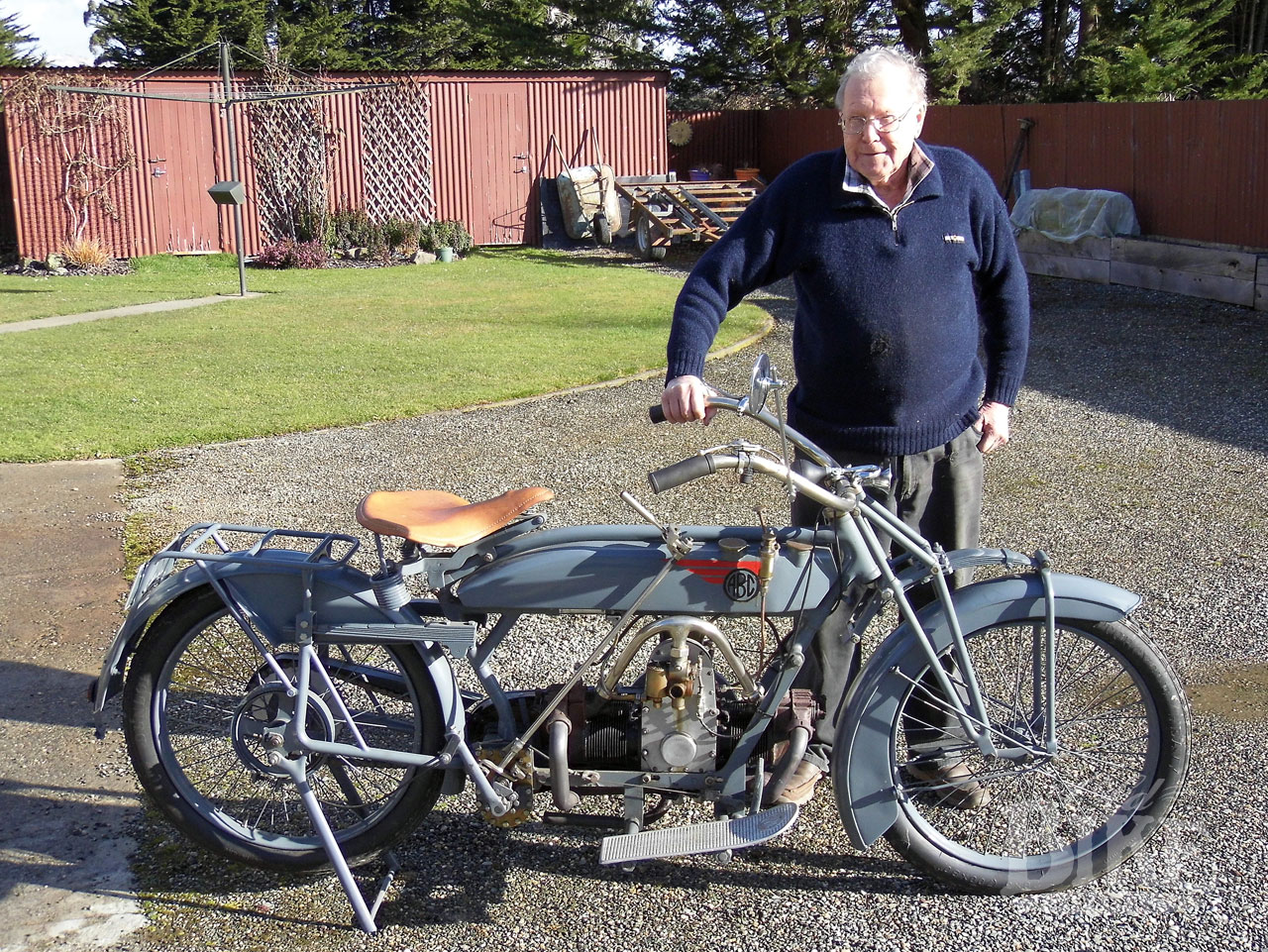
The leading link leaf spring forks were introduced by 1916 replacing the earlier girder forks. These look unusual but in concept were not that much different to the contemporary Indian front forks and they look relatively normal when compared to the likes of the post WW2 FN arrangement. The 1916 ABC was painstakingly restored by Harvey West in a remote rural settlement in Southland, New Zealand. The machine kicks into life quite easily, running remarkably quietly and smoothly for a machine of this vintage. Harvey reports it runs well on the road but the unusual gear change arrangement takes some getting used too, as does the feeble single band rear brake.
1921 ABC
Granville Bradshaw always had a close association with the Sopwith aircraft company from his days at Brooklands. In December 1918 Granville transferred the manufacturing rights for his motor cycles to Sopwith Aviation Co Ltd, allowing him to concentrate on engine design. In 1919 they jointly exhibited the Sopwith 390 cc horizontally opposed twin-cylinder overhead valve machine at the annual Motor Cycle Show. It aroused a lot of interest with innovative front and rear leaf springs and “expanding” brakes, wet sump lubrication, and a four-speed gearbox. It was also one of the first motorcycles with a duplex cradle frame. One thing it did not have, however, was any form of starting mechanism; the rider had to “paddle” or bump start to get the engine going.
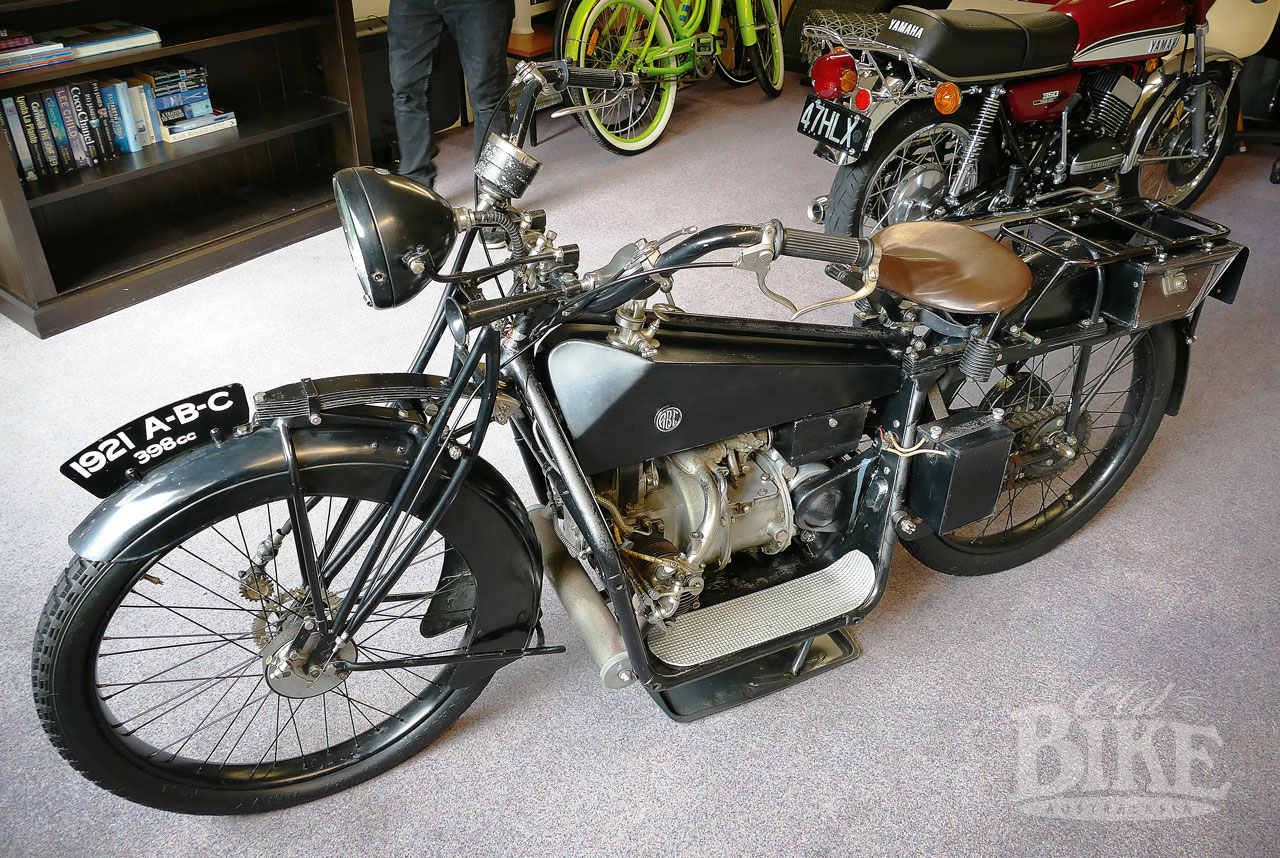
The Sopwith ABC flat twin was rushed into production before it was fully developed, leading to some problems, like pushrods flying out (eventually a cottage industry sprung up selling fixes for this and other defects). Later models had improved valve gear, speedometers, and electric lighting, and a Sidecar as an optional extra. About 2,200 ABC 400s were produced by Sopwith in Kingston-upon-Thames. Under licence French manufacturer Gnome & Rhone produced an improved 493 cc version of this machine from 1923 until 1925. About 3,000 ‘French’ ABCs, were produced but relatively few remain.
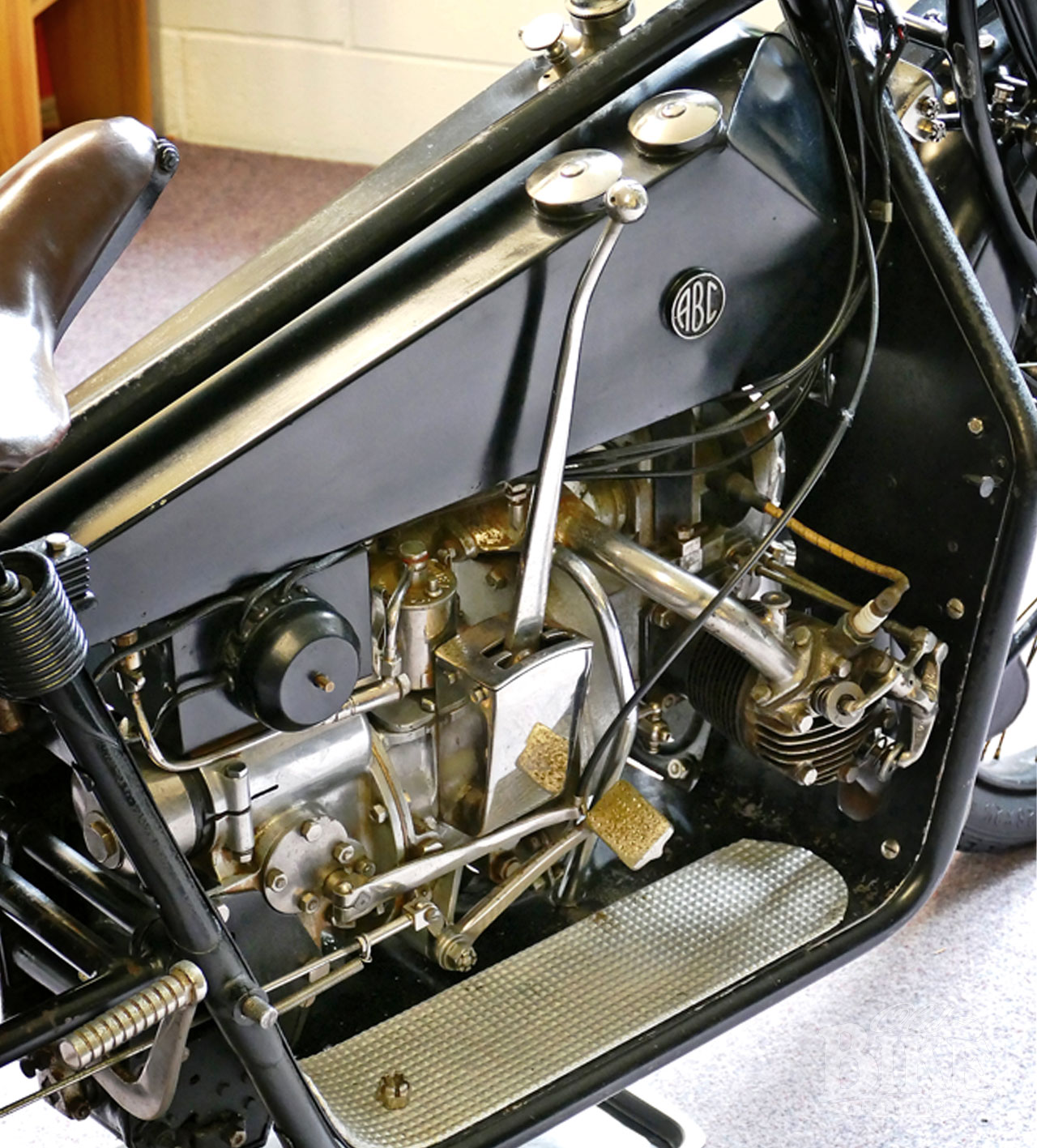
The featured 1921 Sopwith ABC was owned and painstakingly restored by Neil McMillan and now owned by his son Neil (jnr). Neil Senior was heavily involved in the vintage motorcycle scene in the 1950s owning a number of machines in varying state of rebuild, his daily runabout being a 1927 Round Tank BSA. Neil’s involvement with the ABC machine started when he was courting his future bride Pam. Talking to Pam’s landlord, Tommy “Tiger” Askey, about old motorcycles, Tiger mentioned he had a machine that Neil would never have seen and probably never heard of. Tiger went underneath the house and after removing some tarpaulins and blankets dragged out a complete 1921 ABC. Unearthing the machine renewed Tiger’s interest, despite being a disabled WW1 veteran in his late sixties, he got the machine going again and completed a number of long rides on it. The machine was then given to another of Tiger’s tenants who did little with it and who eventually sold it in 1957 to Neil’s friend Richard Beeby.
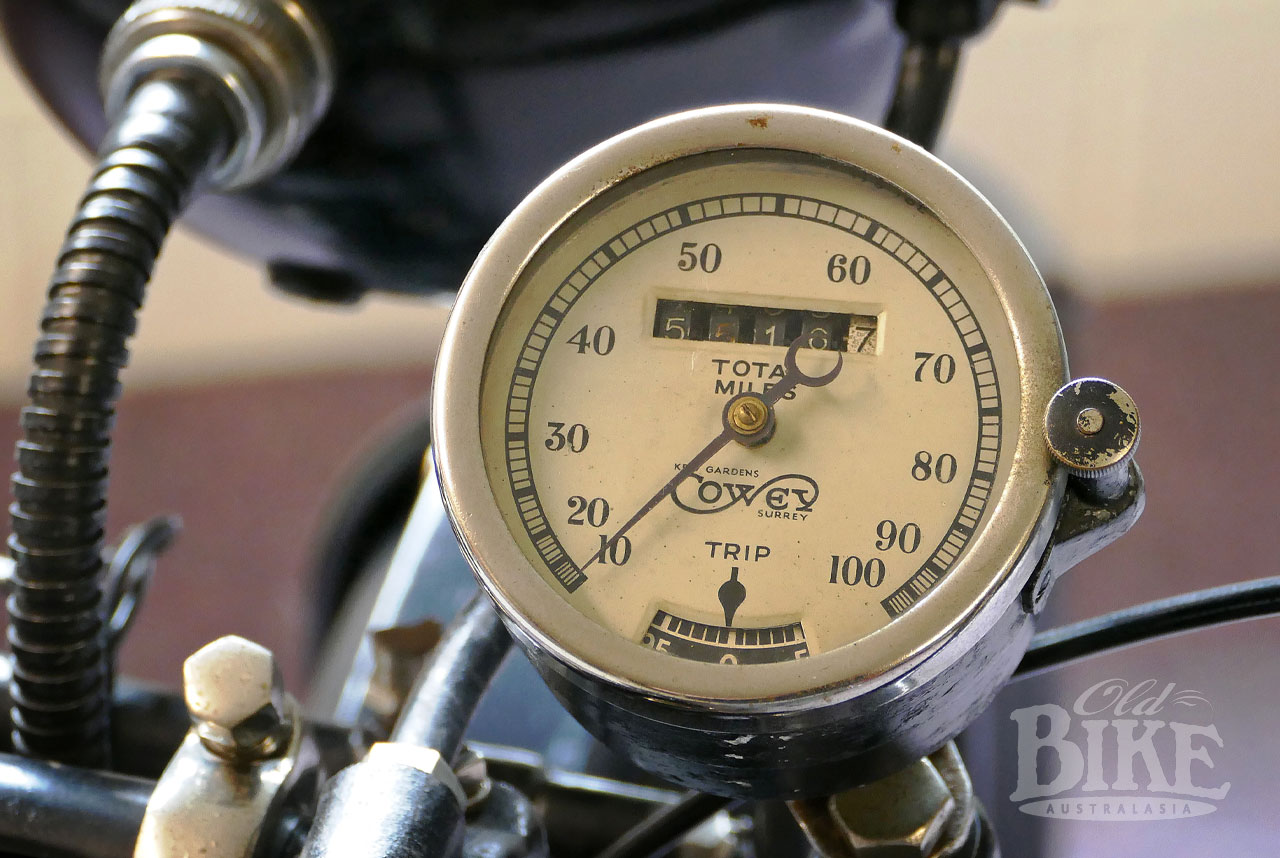
Richard started the restoration process by stripping every single piece apart. Whilst this was going on Neil made several attempts to buy the machine and as Richard’s interest waned he finally agreed. £20 changed hands for a collection of boxes, parts and two brand new 26×3½ beaded edge tyres. The final act was raking through the gravel of Richard’s shed floor looking for stray nuts and bolts.
Neil took a long hard look at what he had, concluding that there were a couple of key issues to be resolved before the restoration could be successfully completed. The crankshaft was in a poor state, the pistons were damaged, the cylinders were badly worn and the key slot in the rear sprocket shaft was also badly damaged. After spending some time trying to fix the original crankshaft a friend turned up with a better example. Unknowingly the National Airline (NAC) magna-fluxed the new crankshaft which passed perfectly. The old crankshaft was a maze of spidery cracks. Lapping the big ends and using oversize rollers produced a serviceable bottom end.
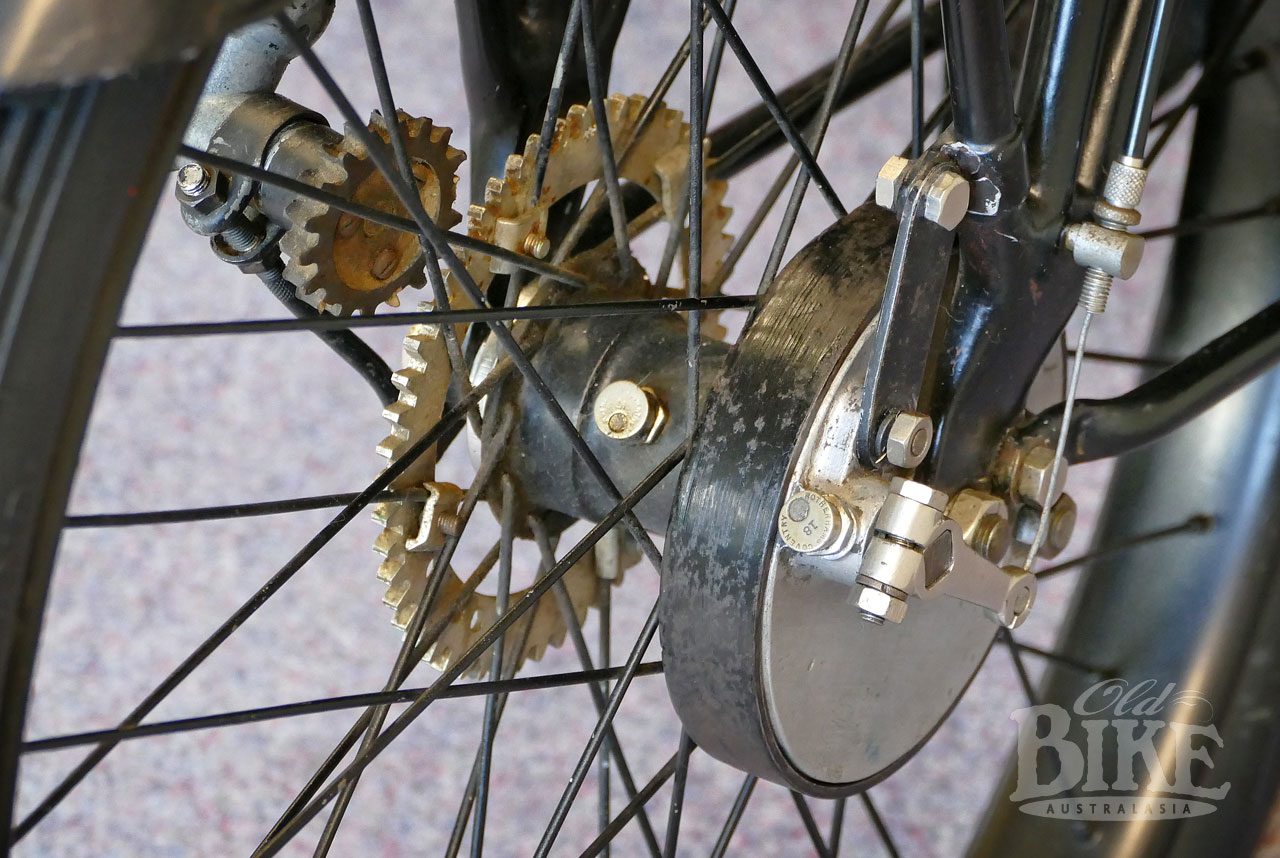
The pistons were an unusual design, with very thin piston rings and a very small gudgeon pin (slightly bigger than a 4 inch nail). No standard or oversize pistons were available and the originals were too far gone. Neil decided to cast his own pistons using broken pieces of Willy’s Jeep pistons poured into a sand mould, made using a homemade pattern and core. Using the kitchen range to melt the aluminium the first attempt failed when the crucible cracked and molten aluminium trickled across the kitchen floor! A local foundry cast a pair of pistons and a local engineering company machined them to size, made new gudgeon pins and finish bored the new cylinders, the total bill was £97 (a lot of money in those days).
While the pistons were being made Neil machined up a pair of barrels from an old steel hydraulic ram, late in the day he realised the cylinders were handed and just avoided making two right-hand cylinders. The heads were refurbished and the heads and barrels plated. The valves, rocker gear and very small pushrods (3/16 inch diameter with 2BA threaded adjusters) were thoroughly checked but proved unreliable, with push rods regularly flying out of their cups (a common problem). A Beam Car Club modification kit made a world of difference.
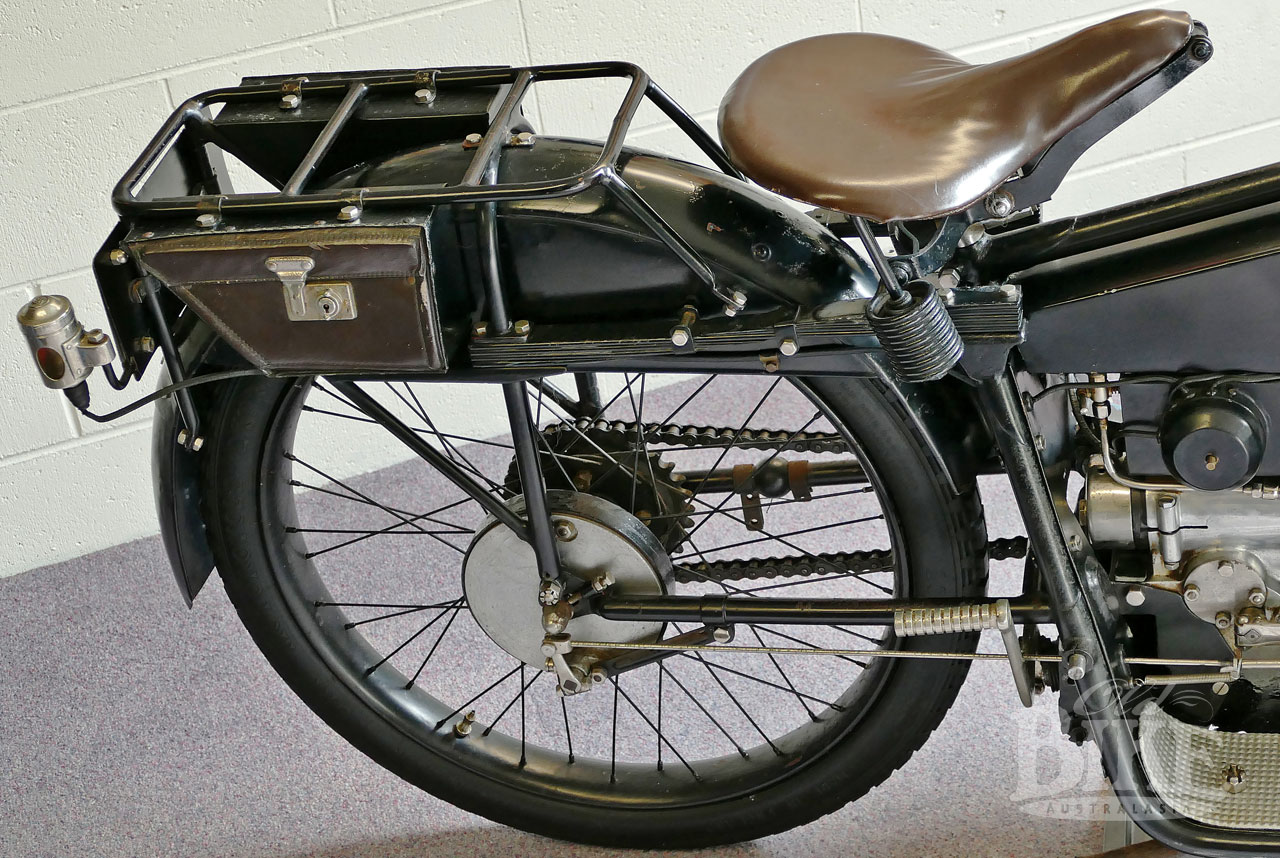
The clutch and gearbox was the next challenge, unknown to Neil the clutch had been relined with the wrong type and thickness of friction material which led to alignment issues all the way through the transmission. Once the penny dropped Neil had to start again with the gearbox and transmission; all of the gearbox bearings were replaced. The rear drive pinion had stripped at some point and a replacement made, but it was not a good match for the crown wheel. Neil spent hours grinding the bearing box, checking the mesh with engineers’ blue and hand fettling the teeth to get an acceptable fit.
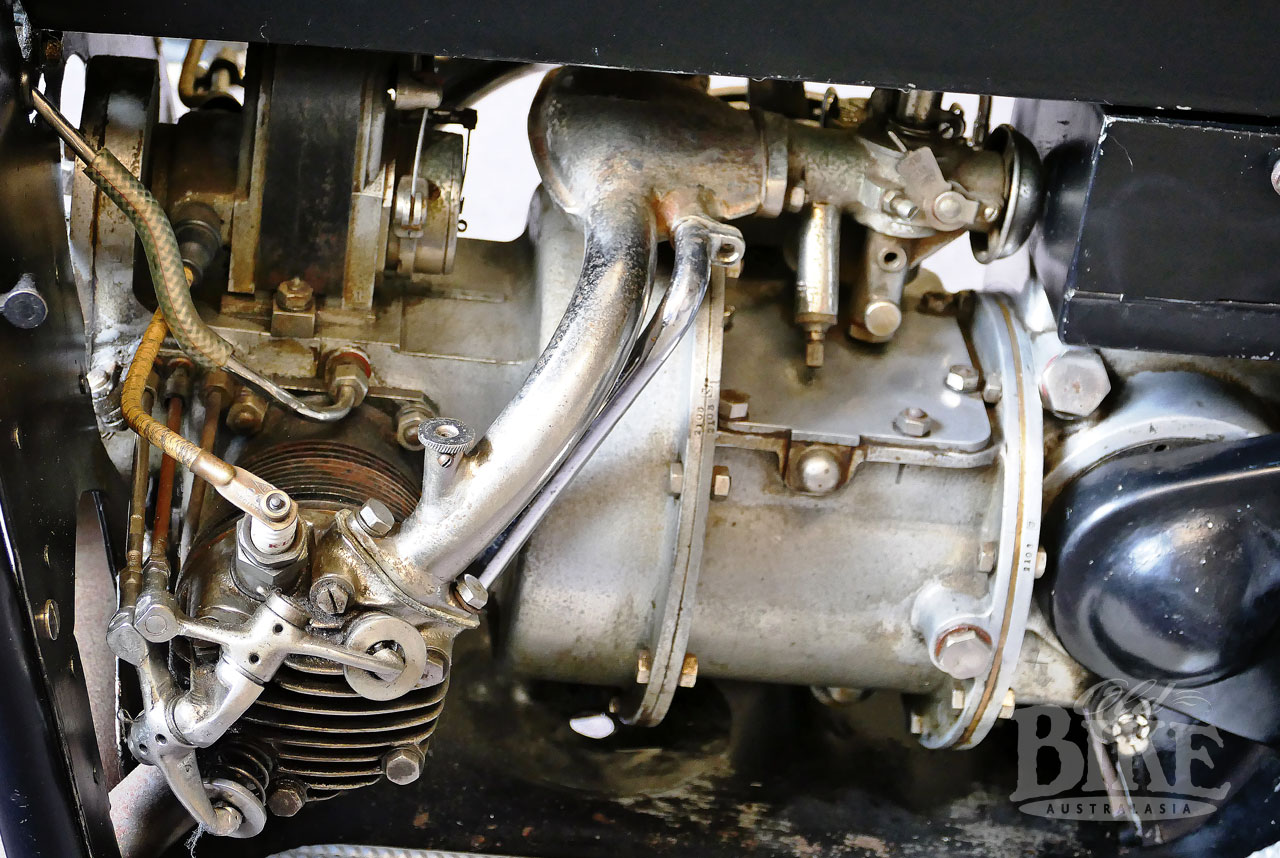
The early machines did not have a kick-starter and the later machines had a rather flimsy arrangement. To improve things Neil cast his own kick-start lever and hand cut a new stronger kick-start quadrant. Neil acquired some new beaded edge rims for the wheels which he drilled and dimpled to fit. The front brake was missing and may have not even fitted (early motorcyclist distrusted front brakes). Fellow ABC owner, Bill Veitch (well-known local motorcycle dealer, racer and restorer), lent Neil a front brake assembly to copy. The front forks were refurbished with all the hardened bushes renewed and fitted with new Rotherham oilers.
The electrical components were acquired over the years but they are purely cosmetic as is the speedo. However the magneto was fully rebuilt by a local company and still produces a very healthy spark. Neil did all of his own nickel plating, electrically stripping the items then depositing a layer of copper before the layer of nickel.
Whilst researching the history of the machine Neil discovered it had a racing history successfully competing in hill climbs and beach races in the early 1920s ridden by Dunedin dealer Josh McWhinney. Josh always raced wearing an ABC jumper which Neil (jnr) now owns. Neil wrote a small booklet about his vehicles’ histories, restoration adventures and all the local characters involved in vehicle restoration.
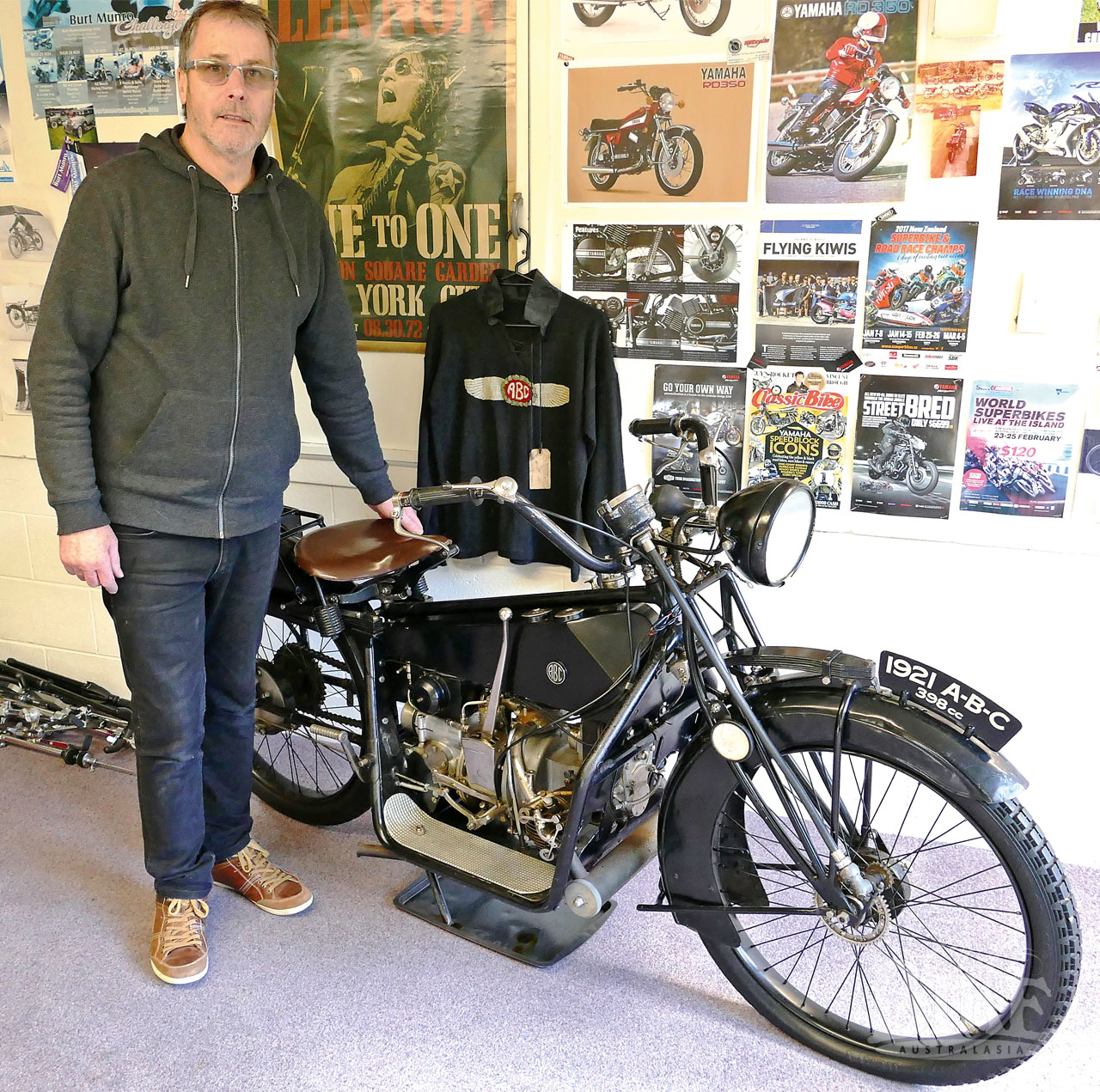
The pressure of bringing up a young family and restoring Neil’s vintage cars meant the ABC’s restoration took a number of years. The machine was finally back on the road in the 1976. He and his sons Neil (jnr) and Roddy rode it on a few rallies and displayed it at shows. Neil (jnr) remembers riding the bike in 1976 when he was 18, shortly after it was finished. “The machine was push started, it ran pretty well, was smooth and easy enough to ride. I do remember push rods being flung out from time to time and looking for them on the road side.” It was last used in 1984 after which it was put into storage. It then passed to Neil (jnr) who is currently considering the machine’s future.
1915 Quirk’s Mona
Tucked away in Harvey West’s workshop is another very rare fore and aft twin; a 1915 Quirk’s Mona. The Quirk’s Mona is claimed to be the only wholly-designed and indigenously-produced Australian motorcycle, with only 90 made – although some sources claim it was significantly more. All other Australian-made machines used some form of bought-in components; usually a proprietary motor (from the UK, Europe or USA), frame lugs and forks. The uncertainty over the number of machines produced is understandable, with the two remaining examples engine numbers being 277 & 397, which even if engine numbers started at 101 (a common practice then) would indicate that nearly 300 were made.
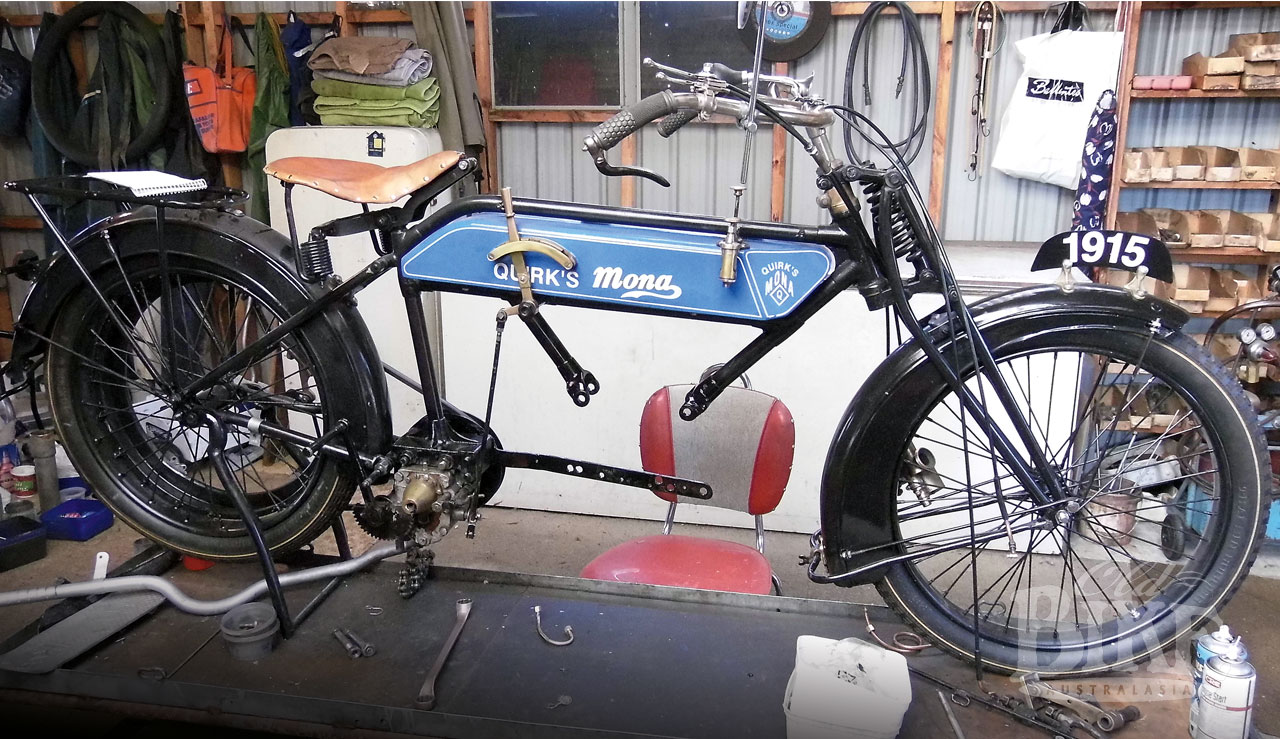
Designed in 1913, by Ernest Francis, it was clearly inspired by the successful Douglas machines, being very similar to the 4hp Douglas but with the engine hanging from the frame. The prototype 2 3/4 hp machine was entered in the 1913 Sydney to Melbourne Reliability Trial. Made by the Quirk’s Lighting and Engineering Ltd Melbourne with a factory at Alexandria NSW, production continued until 1916, probably another victim of the drive for wartime munitions.
The side-valve 600cc (4½ hp) engine drove the 3 speed gearbox by chain. Equipped with a kick-starter the gearbox had a belt drive to the rear wheel. The girder forks held a brakeless 28” wheel; the rear 28” wheel had a single rear brake. The superbly-built Quirk’s Mona featured many unique and advanced features for its time.
Harvey bought two 1915 machines through an Auckland auction in 2012. The machines previously belonged to well-known Australian collector Paddy Ryan, who sold them in 1970. One machine was stripped down but substantially complete, the other machine was also stripped down reasonably complete but missing some items like handlebars control levers and a floorboard.
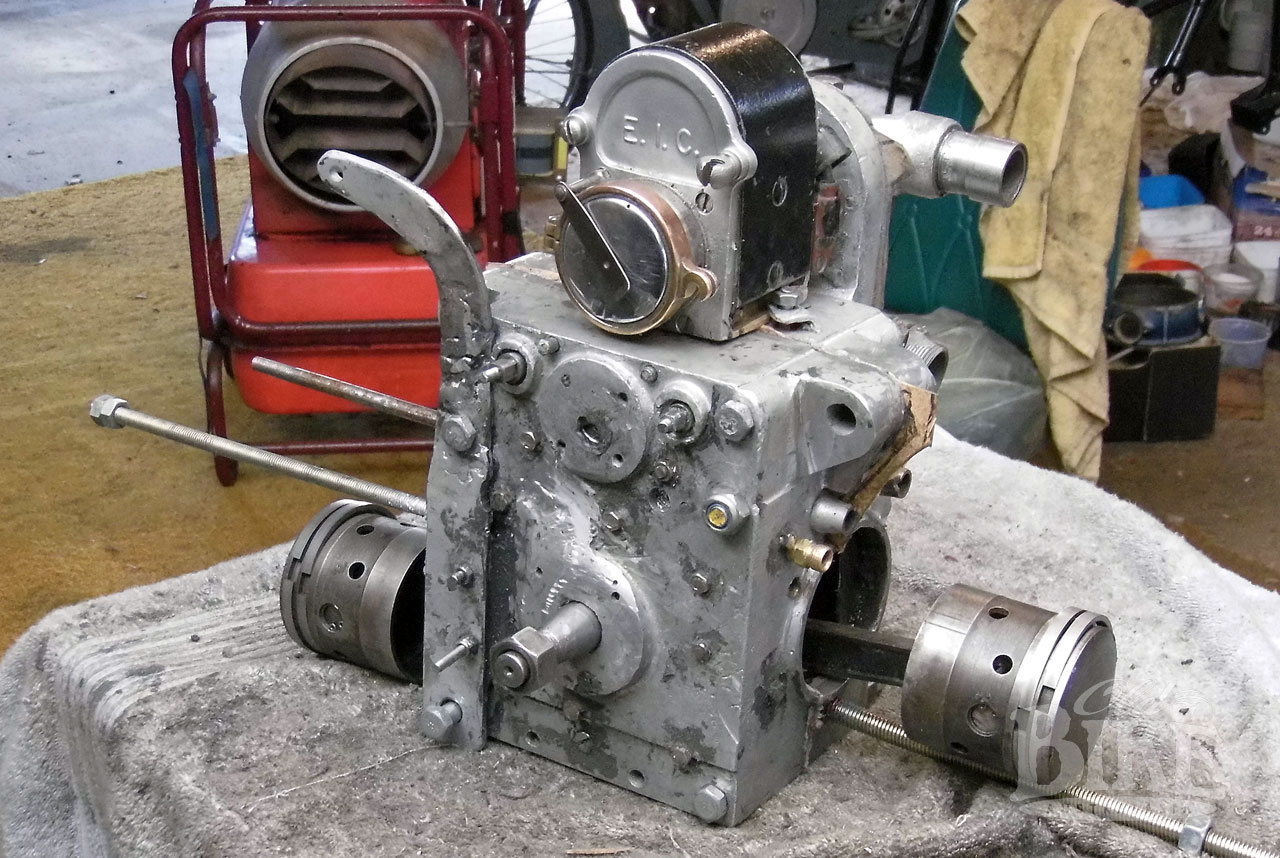
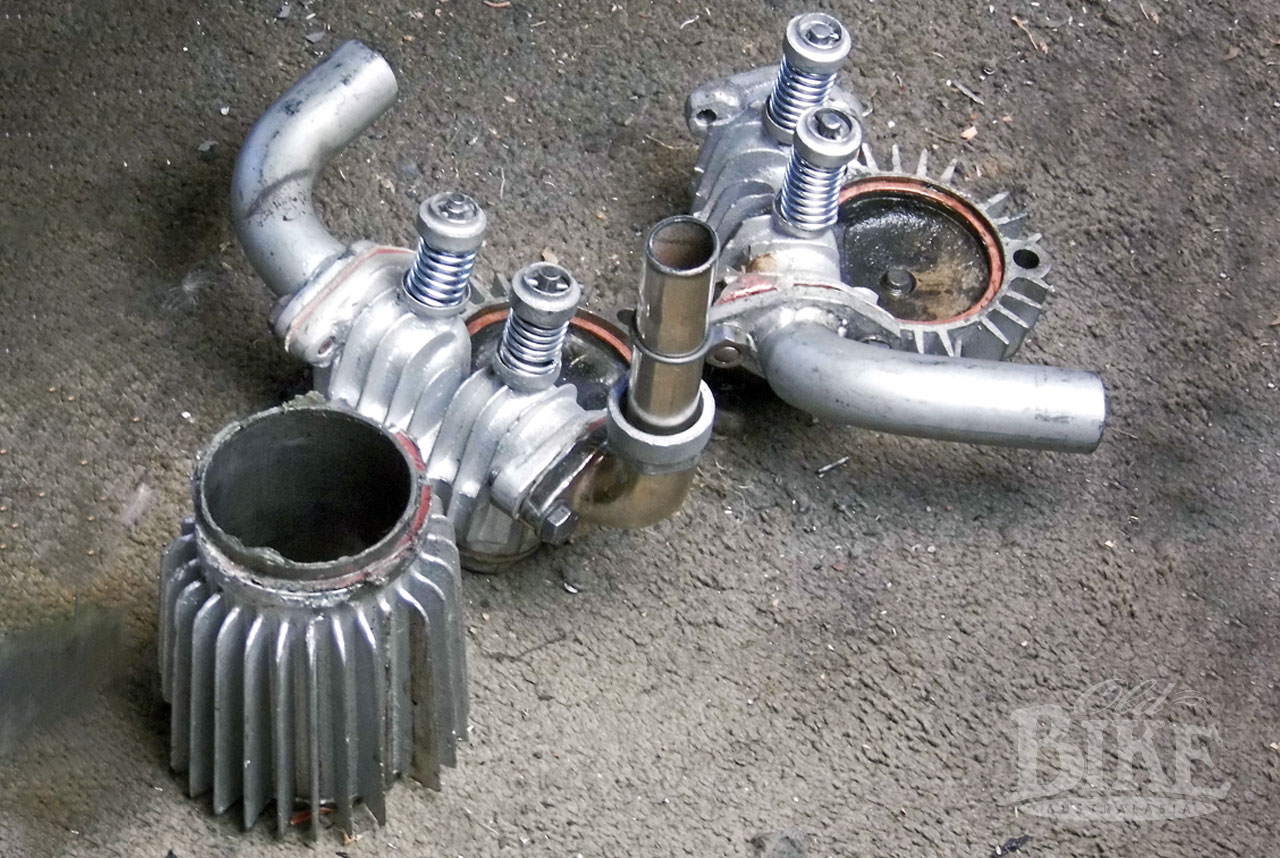
An interesting feature is the front forks which may be some very rare Maplestone (made by the Firth bros Melbourne) which were made under licence by Webb in the UK and were the basis of the later Webb forks. However some adverts showed other forks.
The Quirk’s Mona was painstakingly rebuilt to running condition by Harvey. After a short period of running it became clear that there was a major problem with the engine; the crankcase was cracked. A previous weld repair had failed and even the addition of an internal strengthening plate has not cured the problem. Harvey is currently considering what to do next.
Granville Bradshaw
Granville Bradshaw was a controversial figure, described as an excellent conceptual engineer and a great salesman. During WW1 he worked on a number of aircraft engine projects, designing one of the first British radial aircraft engines that went into production. The 9 cylinder ABC Dragonfly radial was rushed into production before it was fully developed. Despite good initial results the engine overheated at high power and the cylinder head joints leaked causing further overheating. Twelve months of intensive work by the Royal Aircraft Establishment and pioneering work by Sam Heron finally solved the problems.
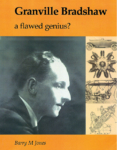
Bradshaw designed a number of motorcycle engines. In 1923 he designed the overhead valve engine for the P&M Panther, based on the earlier robust engine-cum-frame design of the 4-1/2hp sv engine; it stayed in production until the early 1960s. In 1927 he designed the P&M Panthette, an unusual and very advanced machine for its time, with an across-the-frame inline 250cc V twin, a car type gearbox and leaf springs controlling the valves.
Granville Bradshaw also designed unusual oil-cooled motorcycle engines with the cylinder barrels encased in oil baths. These were manufactured under licence by J Walmsley & Co (Preston) Ltd. The flat-twin 500cc version of this engine was used in the Zenith-Bradshaw motorcycle from 1921. A single cylinder 348cc version emerged in 1922, offered as an option by a number of companies like OK-Supreme, Sheffield-Henderson, DOT, Orbit, Toreador and Coventry-Mascot. An 1100cc V-twin version of this oil-cooled engine was adopted for the Belsize light car.
Granville always claimed that BMW copied his concept of an across the frame flat twin. However BMW were already producing the Victoria fore and aft flat twin and it does not take a great leap to see the advantages (and disadvantages) of placing the engine across the frame. Post WW1 Granville made a fortune designing and producing an early form of “Pokey” machines, losing the lot when a business partner sunk the money into a sophisticated “Ponzi” scheme. A Toroidal engine project later dominated his life until his death in 1969.
